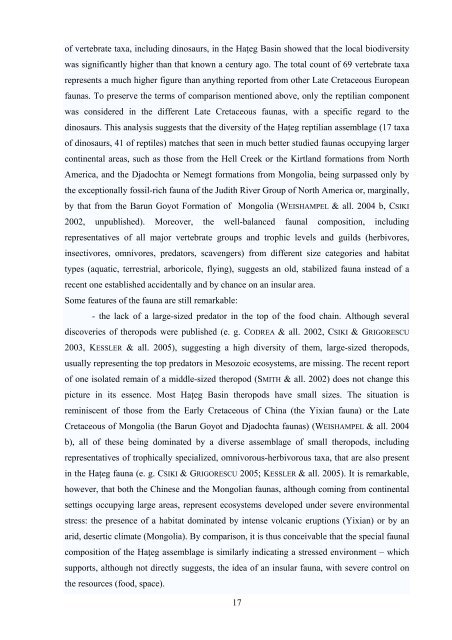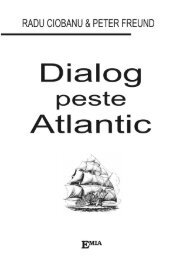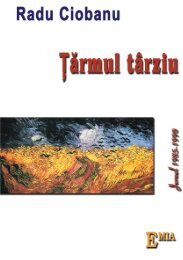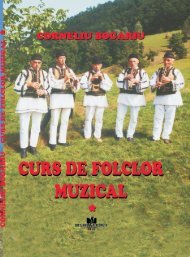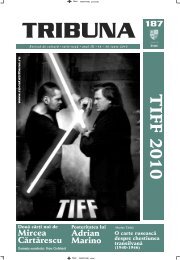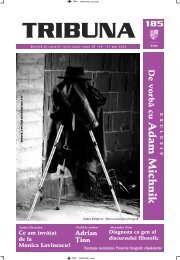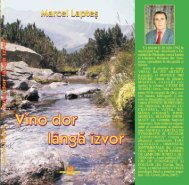u PDF
u PDF
u PDF
- No tags were found...
You also want an ePaper? Increase the reach of your titles
YUMPU automatically turns print PDFs into web optimized ePapers that Google loves.
of vertebrate taxa, including dinosaurs, in the Haţeg Basin showed that the local biodiversitywas significantly higher than that known a century ago. The total count of 69 vertebrate taxarepresents a much higher figure than anything reported from other Late Cretaceous Europeanfaunas. To preserve the terms of comparison mentioned above, only the reptilian componentwas considered in the different Late Cretaceous faunas, with a specific regard to thedinosaurs. This analysis suggests that the diversity of the Haţeg reptilian assemblage (17 taxaof dinosaurs, 41 of reptiles) matches that seen in much better studied faunas occupying largercontinental areas, such as those from the Hell Creek or the Kirtland formations from NorthAmerica, and the Djadochta or Nemegt formations from Mongolia, being surpassed only bythe exceptionally fossil-rich fauna of the Judith River Group of North America or, marginally,by that from the Barun Goyot Formation of Mongolia (WEISHAMPEL & all. 2004 b, CSIKI2002, unpublished). Moreover, the well-balanced faunal composition, includingrepresentatives of all major vertebrate groups and trophic levels and guilds (herbivores,insectivores, omnivores, predators, scavengers) from different size categories and habitattypes (aquatic, terrestrial, arboricole, flying), suggests an old, stabilized fauna instead of arecent one established accidentally and by chance on an insular area.Some features of the fauna are still remarkable:- the lack of a large-sized predator in the top of the food chain. Although severaldiscoveries of theropods were published (e. g. CODREA & all. 2002, CSIKI & GRIGORESCU2003, KESSLER & all. 2005), suggesting a high diversity of them, large-sized theropods,usually representing the top predators in Mesozoic ecosystems, are missing. The recent reportof one isolated remain of a middle-sized theropod (SMITH & all. 2002) does not change thispicture in its essence. Most Haţeg Basin theropods have small sizes. The situation isreminiscent of those from the Early Cretaceous of China (the Yixian fauna) or the LateCretaceous of Mongolia (the Barun Goyot and Djadochta faunas) (WEISHAMPEL & all. 2004b), all of these being dominated by a diverse assemblage of small theropods, includingrepresentatives of trophically specialized, omnivorous-herbivorous taxa, that are also presentin the Haţeg fauna (e. g. CSIKI & GRIGORESCU 2005; KESSLER & all. 2005). It is remarkable,however, that both the Chinese and the Mongolian faunas, although coming from continentalsettings occupying large areas, represent ecosystems developed under severe environmentalstress: the presence of a habitat dominated by intense volcanic eruptions (Yixian) or by anarid, desertic climate (Mongolia). By comparison, it is thus conceivable that the special faunalcomposition of the Haţeg assemblage is similarly indicating a stressed environment – whichsupports, although not directly suggests, the idea of an insular fauna, with severe control onthe resources (food, space).17


